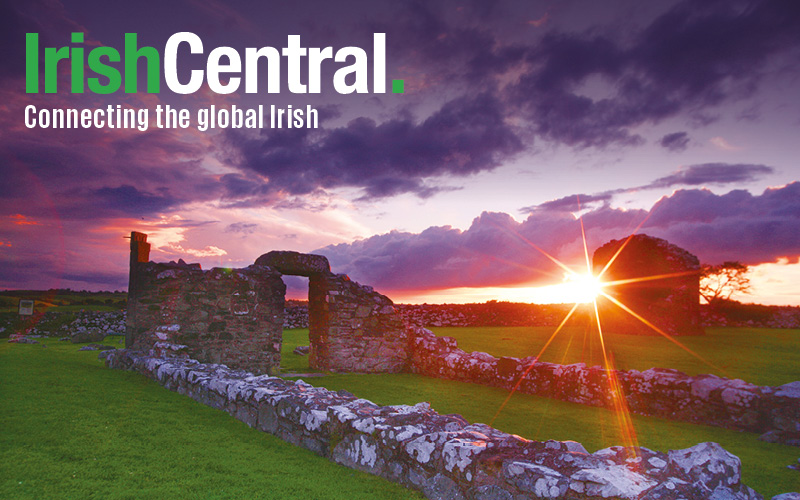When I was young I had the habit of staring off into space. We might be sitting at the kitchen table cutting string beans for dinner when I'd go into a trance-like state. My mother, Nora, always said that I reminded her of her mother, who used to do the same thing. I wondered what my grandmother may have been thinking as she stared into space or out the window at the sheep standing in the fine rain. I never knew her. She died in Ireland when my mother was thirteen years old. My grandmother, Sarah Convey, was born in 1876. Her parents, James Convey and Catherine Garvey, were born during or shortly after the Great Famine of 1847. They survived the famine even though County Mayo, in the far west of Ireland, was one of the areas hardest hit by the potato blight. My mother said that her parents told lots of stories about their families, but personal stories of the famine were never handed down by survivors and the "great silence" prevailed down the generations. The fact that Sarah's parents owned land and had a vegetable garden may account for their survival. Sarah Convey left her home in Swinford, one of thousands of young single Irish women who came to America to work as domestics and sent money home to their families. Her two brothers, Jim and Michael, and her sister, Winnie, were already here. In the portrait (left), taken at the Carl Wolf Studio in Philadelphia in 1905, Sarah wears a beautiful turquoise Edwardian-style dress, after which I modeled my wedding gown. Either her eyes were a brilliant shade of blue or the photographer thought it a good idea to match her eyes to the dress. She also wears a gold locket that was handed down to my Aunt Catherine and lent to me for my wedding day. For my wedding dress I chose a champagne-colored peau de soie fabric and used a Vogue pattern that mimicked the Edwardian dress. It had a high collar, which I covered in lace, and I altered the front of the bodice to resemble the dress in the photograph. There were twenty-one buttons down the back, each of which had to be covered in the same fabric. The last thing I did the night before my wedding day was to sit on top of the dining room table, cross-legged like an old tailor, and laboriously cover and sew on those twenty-one buttons. Unlike most of the Irish women who immigrated to America, Sarah Convey did not stay. Her father back in Ireland became ill and she was called home to care for him. When he died she inherited the land - good land, adjacent to the River Moy in the village of Daranaugh in Swinford. Tom Price was a neighbor in the village but, as the youngest of four brothers, did not stand to inherit any land. He went to England for several years to work as a laborer. When he had saved enough money, he returned to County Mayo and purchased the land adjoining the Conveys' land from a widow named Mariah Devaney. Sarah Convey and Tom Price married and joined their two parcels of land together. They were both into their late thirties when they began their family. I suspect that Sarah had a creative soul. Perhaps, when she stared into space, she was dreaming of something, desiring something, but in her everyday routine she didn't have the leisure to express it. She did, however, keep a vegetable garden and baked bread and rhubarb pies. She spun the wool sheared from their own sheep, into yarn with which she knitted socks and sweaters. She raised chickens and milked cows, and traded her eggs and butter in the town for tea and sugar, and fabric with which she made clothing. Her creativity was part of her life, not separate from it, a necessary and integral part of her existence. Through all this activity, my mother tells me, Sarah Convey always sang around the house. Sarah Convey Price was very much a part of the cottage industry in Ireland when the women made a living from their butter and eggs and their spinning while the men worked the farm and cut the turf out of the bog for fuel. The peat fire heated the home, and all the meals were cooked in large hanging pots and the breads and pies baked on the stone hearth. My mother always remembered her mother at home singing aloud as she did her chores. Life was predictable - vegetables in the garden, hay in the field, food on the table and a new pair of hob-nailed boots when the old ones wore out. Tom Price recited poetry and read the paper to his family by the fire at night. He also taught the children how to play cards - a game called "25." My grandmother was unhappy with the card games, saying that Tom would turn them into gamblers. When the parents wanted to discuss something without the children understanding, they spoke in their native Irish language. My mother was in her last year of primary school when her mother became ill. Country people didn't run to the doctor with every ailment and, after a week or so, she was feeling better. On the Sunday morning when it was time for church, her mother said to her, "You go ahead now, Nora, you're faster than me." When my mother and her brothers, Andy and Michael, were coming back down the road from Mass they saw the priest coming from the house. A neighbor boy ran up to her and said, "Noreen, your mother's dead." My Uncle Andy told me years later that it was he who found her and that this was the moment he went stone deaf from the shock of it. When Sarah died, Nora was left to take care of her father and two brothers. She did not go on to secondary school, even though she was an avid reader and wanted to become a teacher. She told me that she used to go out into the fields and practice teaching to the stones, and how she would sit on the hill looking toward the Ox Mountains and long for her mother. It was now left to Nora to bake the bread, make the meals and mend the clothes. She took care of the men while they took care of the land. Her sister, Catherine, was already in America. She had immigrated at the age of seventeen, had only been gone a few months when their mother died. She tells the story that the night before she heard the news, her mother came to her in a vision and said, "What are you going to do now, Catherine?" Aunt Winnie, Sarah's sister, secured a position for Catherine as a cook in a doctor's home on the Main Line in Philadelphia. Catherine sent money and, occasionally, a nice dress to her sister, Nora, to wear to the dances. A few years later, when a position for governess became available, Catherine sent for Nora. Nora was twenty-two by then. It broke her father's heart to see her go. The day she left for America, Tom Price stood out on the fields and would not come to say goodbye. Though Sarah Convey did not get to live out her dream in America, her two daughters followed that dream a generation later. Her two sons remained in Ireland. Michael, the "black sheep" of the family, "took the shilling" one night, no doubt over a pint in the pub, and found himself next day in the British Army. As this didn't suit him, he deserted and was therefore unable to travel freely between Ireland and England. He lost touch with the family but occasionally word would get back that Michael had been seen. Whether he traveled under an assumed name or simply crossed over on the ferry from England, I'm not sure. But he showed up one time during my mother's last trip to Ireland and they were able to spend some time together. Andy went to work in England as a builder and then returned to the land in County Mayo where he built a new house close to the road. The old stone cottage that belonged to Sarah and Tom Price still stands back off the road, facing the River Moy. In Ireland they have the lovely habit of allowing the old structures to remain instead of tearing them down to make way for the new. The thatch is gone and the stone deprived of its traditional whitewash but, other than that, it looks the same as it does in a photograph of my mother on a bicycle leaning against the wall. Catherine and Nora both settled in Philadelphia. Catherine married a widower named Tom Rowley from Mayo who had daughters, Florence and Peggy. Tom and Catherine had five more children: Tom, James, Maureen, Michael and Kevin. Tom died when the youngest was a year old and Catherine became a widow at thirty-nine. She never remarried and died in April of 2007 at the age of ninety-four. My mother, Nora, married Frank Flanagan from County Roscommon and they had six children: Patricia, Kathleen, Jean, Sally, Frank and Thomas. Frank Flanagan died in 1977 and Nora passed in 1998 aged eighty-two. My siblings and I have no history of "going to Grandmom's house." Sarah Convey was long gone by the time we were born, and our remaining grandparents were an ocean away. But because my mother talked about her, I can see Sarah at the round table in their small cottage in Mayo, wearing a coarse white apron and mixing the dough for the scones or churning her butter and then pouring it into the square wooden molds. My connection to my grandmother, Sarah Convey, is summed up in that long-ago portrait; sharing the blue of her eyes, feeling the resolve of her square shoulders, the softness of the auburn hair swept up in a "Gibson Girl" style, knowing that she was adventurous - coming all the way to America only to be called home before she could make her life here. And, finally, the privilege of knowing that, in me, my mother was reminded of her own mother. Kate Flanagan is a graduate of Boston College and holds a master's in Irish Studies. She is a member of the Irish-American Cultural Society of South Jersey and lives in Ventnor, New Jersey.




Comments